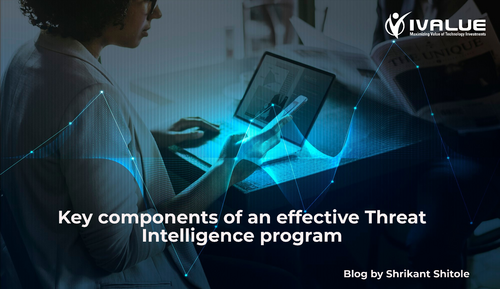The presence of large volumes of data at the organization’s Security Operation Centre (SOC) that are awaiting analysis, combined with a shortage of competent analysts, indicates that security concerns are not being addressed effectively at an organization. As a result, security operations have begun to rely on Threat Intelligence Programs in addition to the standard security framework. Threat intelligence allows security analysts to anticipate the motive, target, and strategy of a cybercriminal, disrupt them quickly, and identify and assess an effective countermeasure strategy.
Threat Intelligence is the database of knowledge and indicators of compromise that can mitigate zero-day malware attacks, ransomware attacks, phishing attacks, data breaches, and insider attacks. All technologies, including firewalls, SIEM systems, Web gateways, and Email gateways, can benefit from this intelligent approach. It is offered as an open-source and commercial solution, with most suppliers charging a monthly subscription fee. The Tactics, Techniques, and Procedures (TTPs) deployed here can help identify patterns of behavior that can be leveraged to address specific strategies used by malicious actors and investigate them. Macro-trends that would impact the organization can be identified as well.
Moving beyond the standard security framework
Threat Intelligence is more than just threat information, where the latter only provides data on industry threats, which are not actionable. The growing volume and sophistication of cyber threats are driving the high growth of the global threat intelligent security solution market. According to Research and Markets, “the global threat Intelligence market size is projected to grow from US$10.9 billion in 2020 to US$16.1 billion by 2025, at a CAGR of 8.2% during the forecast period.” However, being still in its nascent stage, the market has certain challenges to overcome, such as its high costs of implementation and the lack of skilled professionals in the sector.
To help the organization and its stakeholders, a good Threat Intelligence Program must follow a few critical steps.
Establish an Automated Robust Threat Intelligence Framework
Being a continuous process, Threat Intelligence involves phases such as direction, collection, correlation, analysis, and dissemination. Once the requirements are defined, the information required to address them is collected from all internal and external sources by leveraging relevant tools.
This information should be complete, enhanced, and made meaningful by following the other processes. The entire threat intelligence lifecycle must be automated and disseminated internally for further input and analysis. With the addition of the relevant context to the processed data, false positives can be eliminated and triage time for alerts can be reduced.
Collaboration and integration play key roles
Processed, context-driven, and augmented threat intelligence must be shared with third-party associates to build a secure ecosystem that encompasses all stakeholders. Collaboration among disparate teams can be made simple by leveraging relevant technologies. This provides a unified approach to address and respond to incidents, and eliminate operation silos.
The Threat Intelligence Solution should also be able to integrate with other solutions to ensure the overall security of the organization. Furthermore, it can be integrated into the Security Operations Center (SOC) where it is easily shared with other stakeholders, making the overall business operations more efficient.
Build your security team
A well-run threat intelligence program is essential for any organization, but can be difficult to manage without the right team and support. An effective threat intelligence program is driven by a team that focuses on preventative functions such as monitoring, generating, and escalating alerts to the rest of the organization. Considering the shortage of skilled cybersecurity professionals, organizations seek third-party support through managed service providers. Working with a threat intelligence services provider not only gives your team access to threat data, IOCs and ongoing alerts, but provides you with an extended team of threat analysts and researchers to help with the preventative, incident response and strategic support functions of your threat intelligence team.
By applying the above processes, a robust and effective threat intelligence program can be built and made seamless. The consumers of Threat Intelligence, IT Security, and Business teams can help in fine-tuning it further to develop an updated version and ensure their respective organization’s day-to-day business operations are secure. However, security requirements are not the same for all organizations, so the approach of a one-size-fits-all program will be ineffective. A robust Cyber-Threat Intelligence Program is driven by outcomes and will enhance the organization’s security risk posture along with effective responses.

